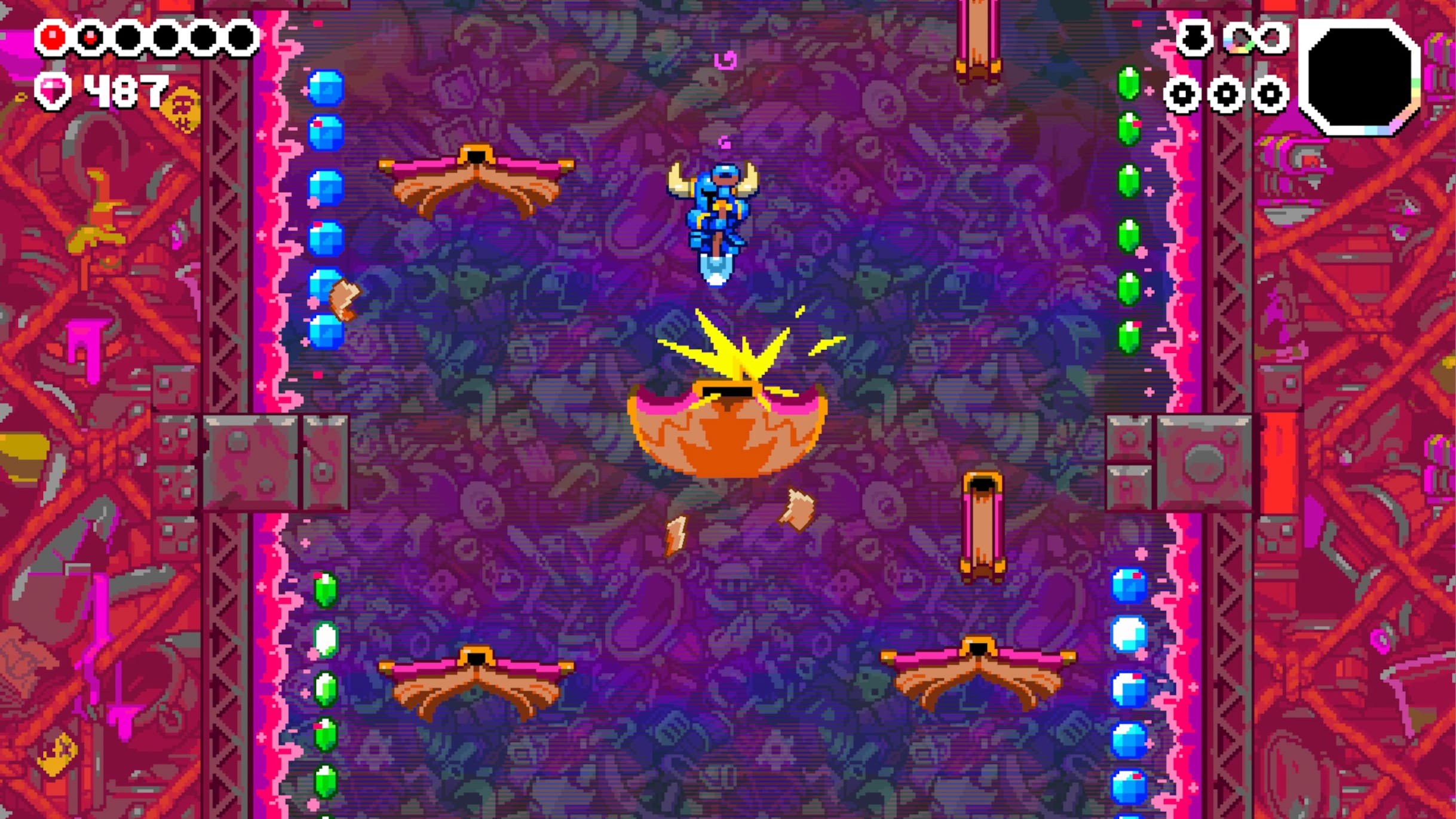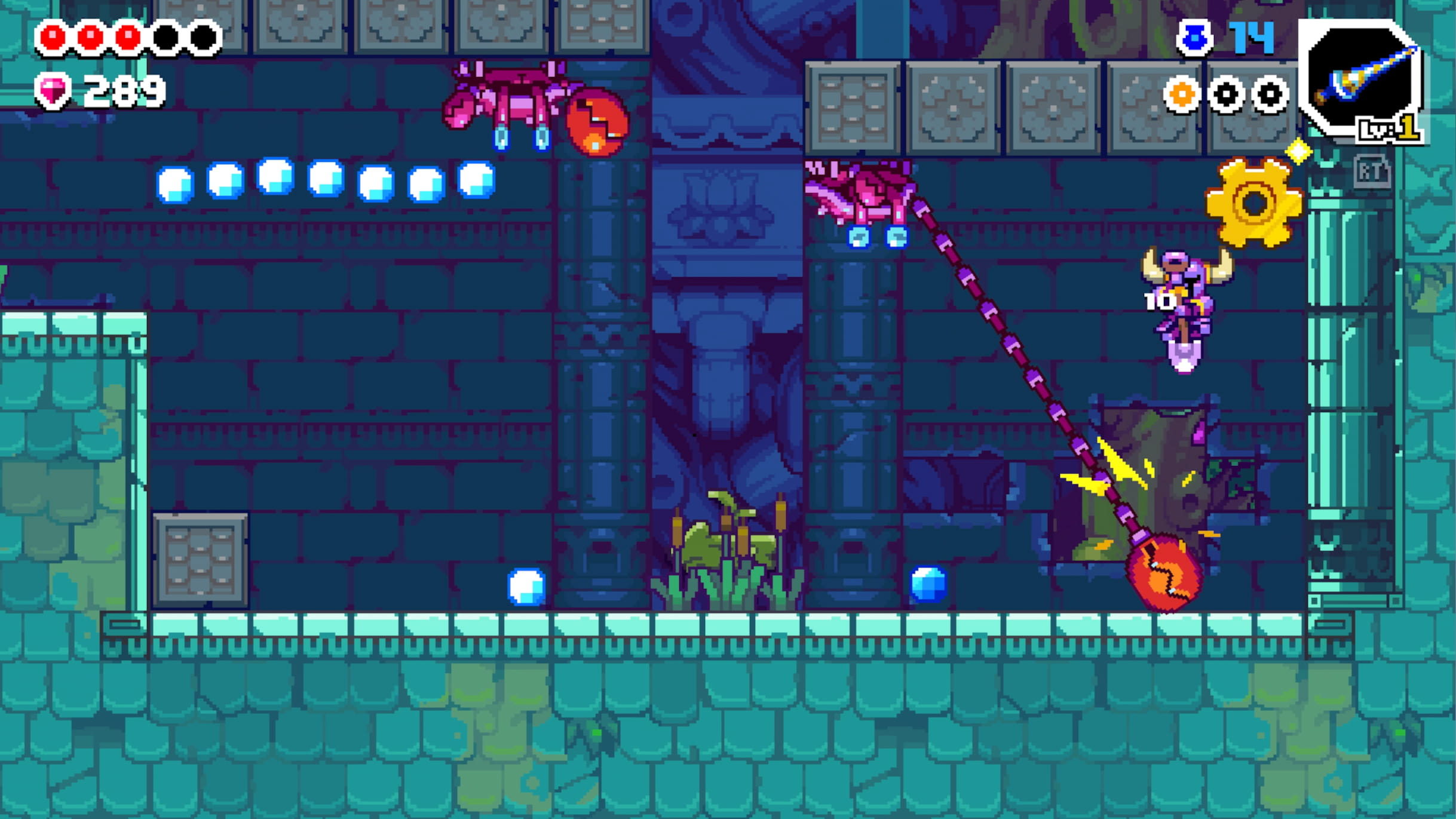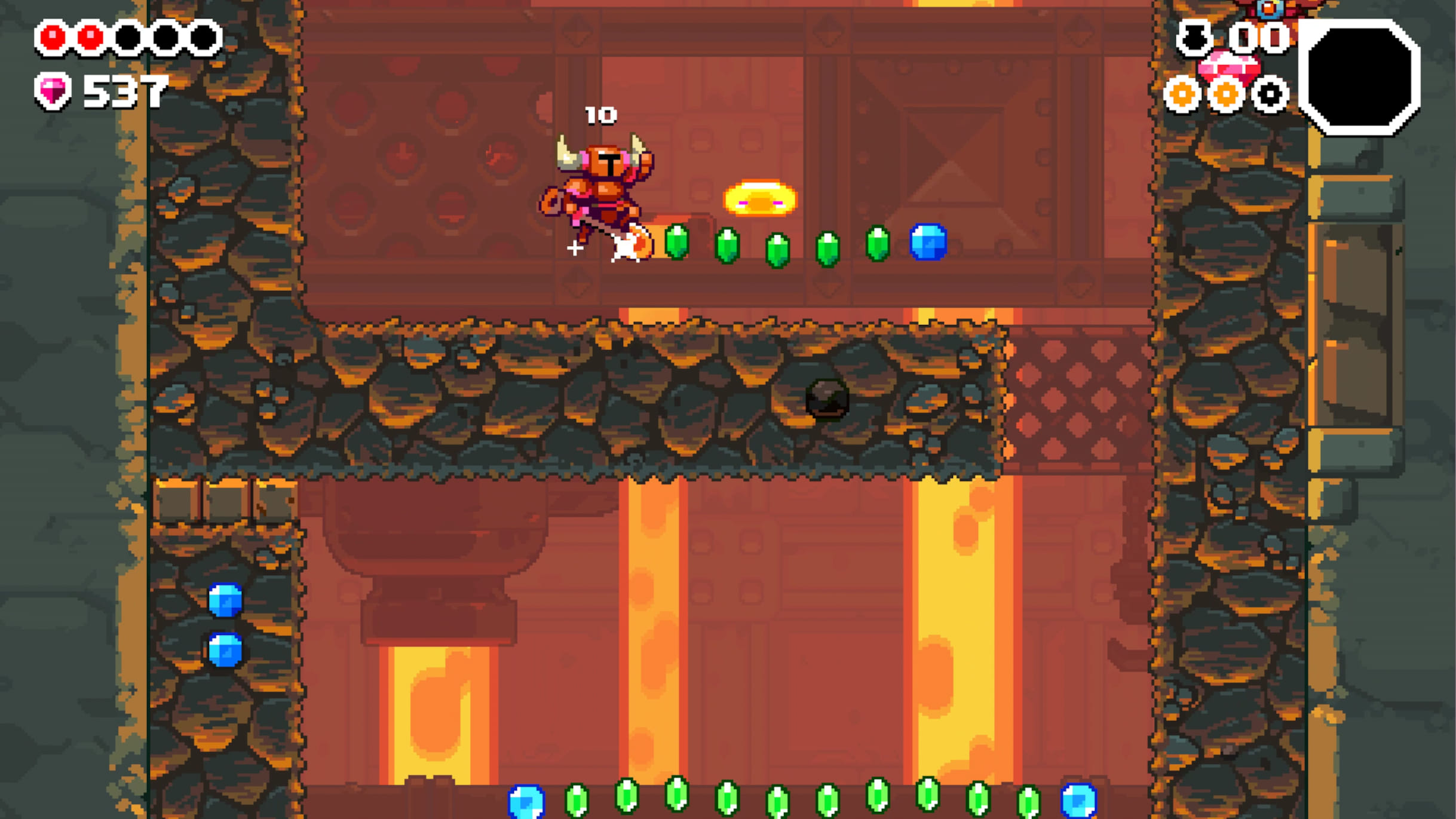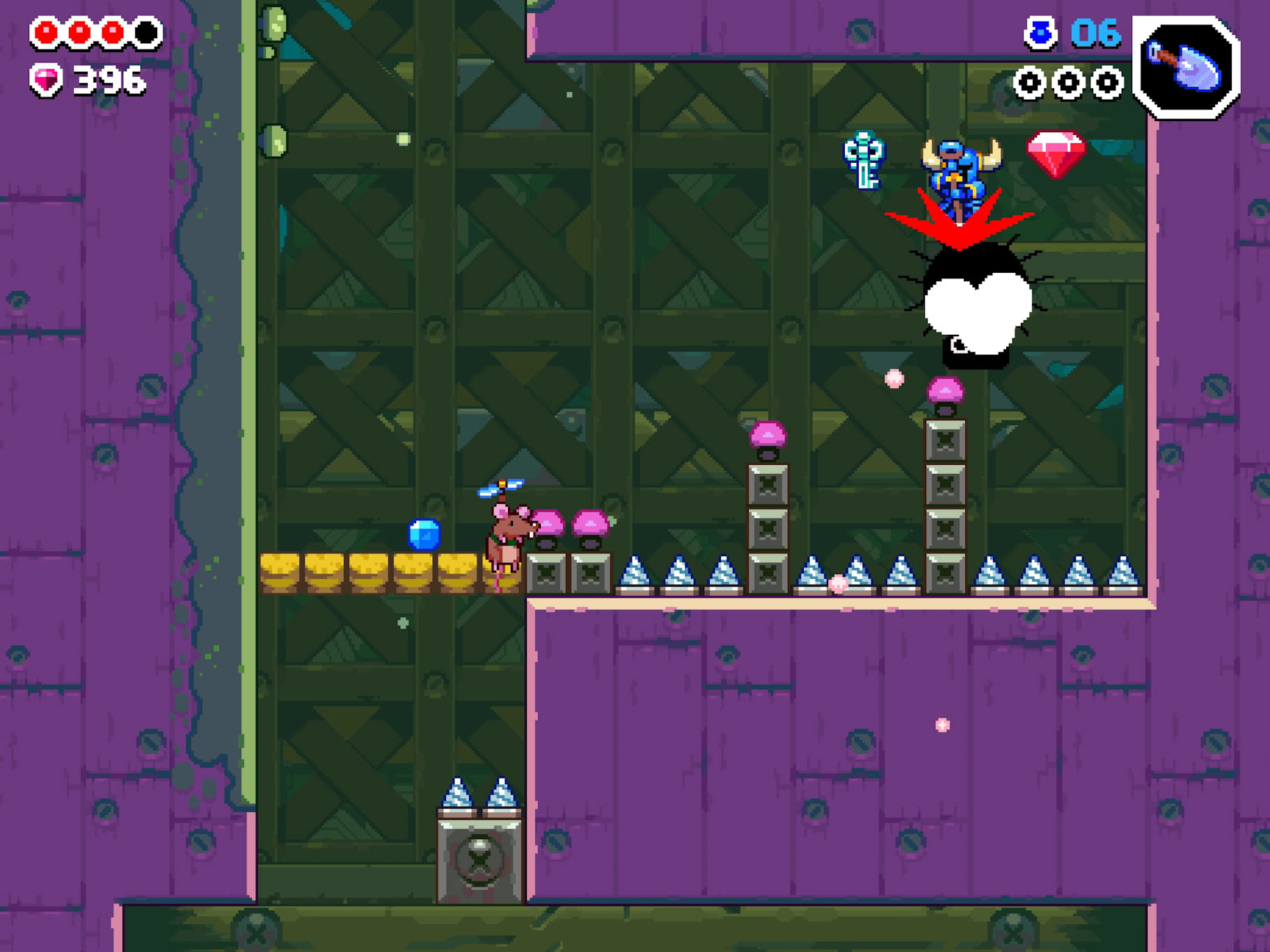Shovel Knight Dig
This shit took over my brain for about five hours, so I feel compelled to say something about it, but I also feel kinda dirty talking about it.

Shovel Knight Dig is Shovel Knight, the Mega Man-styled bounce-em-up loved by approximately everyone, wearing Downwell’s skin. If you have a strong emotional reaction to this, or the words “persistent upgrades”, ride it—it’s probably going to guide you in the right direction.1
The good things about Shovel Knight are here. The core platforming is fun, the subweapons slap ass, and the move to 16-bit style is fantastic; all the familiar faces look great in higher-resolution high-color sprites, and Jake “virt” Kaufman kills it yet again with a hardware-accurate set of PC-98 bangers (spoilers). If you are desperate for more Shovel Knight, you will find it here—but it’ll beat your ass the entire time.
Dig is made of little strips of platforming challenge, anywhere from single screens to giant mineshafts of hazards. On the way down, you’ll find dirt blocks that disappear after you’ve dug them out, collectibles and enemies hidden behind Kirby-style bomb-block tricks, motion-activated hazards, and plenty of point-of-no-return jumps. Gems are placed to direct you, but also to misdirect you, drawing your eye away from hidden hazards and concealed secrets; miss a collectible or an upgrade, and backtracking for a second try is usually impossible.

And make no mistake, you’ll need those collectibles, even if I cannot possibly overstate the cowardice of The Ignore All Spikes Item or The Take Half Damage And Keep Your Most Broken Upgrade Armor. Every screen is fair with just the base moveset, but the random hazards added on top of them are not, turning tight margins of error into crazy tests of foresight. Dig is a vertically-scrolling game that most people will play on a 16:9 display2—forget foresight, you often don’t have sight, and even placid rooms can be tough when you’re dropped into them with no warning.

The core elements here are great—a small set of simple mechanics that interact in countless novel ways—and even the more punishing puzzle rooms dispense a lil’ dopamine once you’ve found the proper route through. At its best, in little 30-second chunks of sidescrolling switchups, Dig could be a proper sequel.
Instead, for most of my playtime, it was a lot of “huhwhuh” as the camera ratchet-scrolled downward, hiding but not unloading falling hazards from above, to reveal a sequence that I had approximately eight femtoseconds to visually interpret and execute. After an hour of dying to the second stage, I switched my resolution to 4:3 and cleared four times in a row.

I would not have bothered if the music was even slightly worse.
If you don’t know what Downwell is, close this tab and buy it right the fuck now, it’s three dollars and one of my favorite things I’ve played in recent memory. ↩︎
On flagship phones or ultrawide monitors, this is substantially worse, and renders easy sequences completely blind. Pay to lose? ↩︎